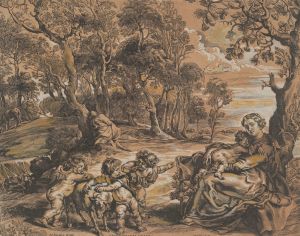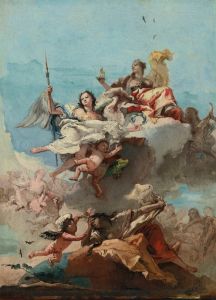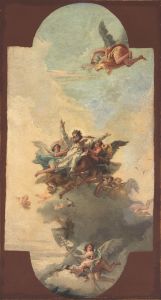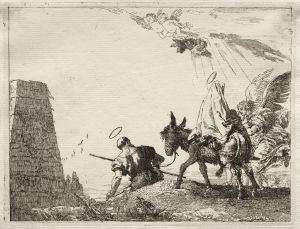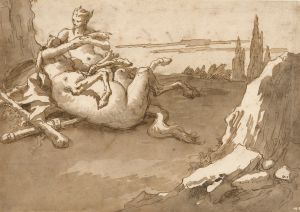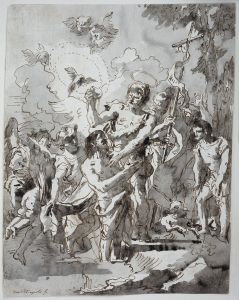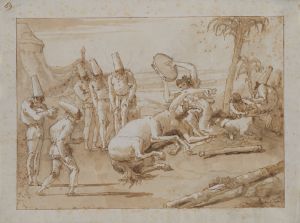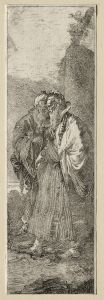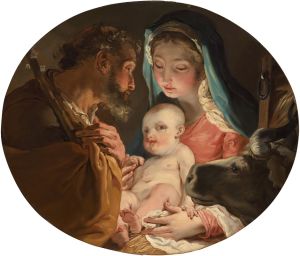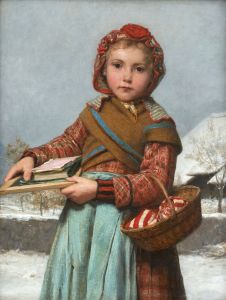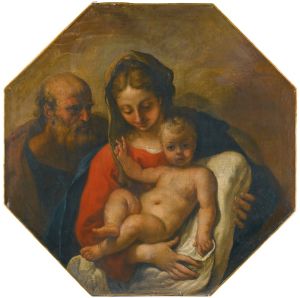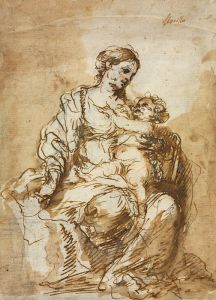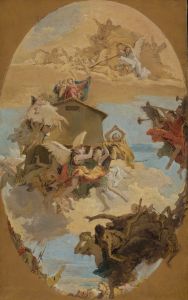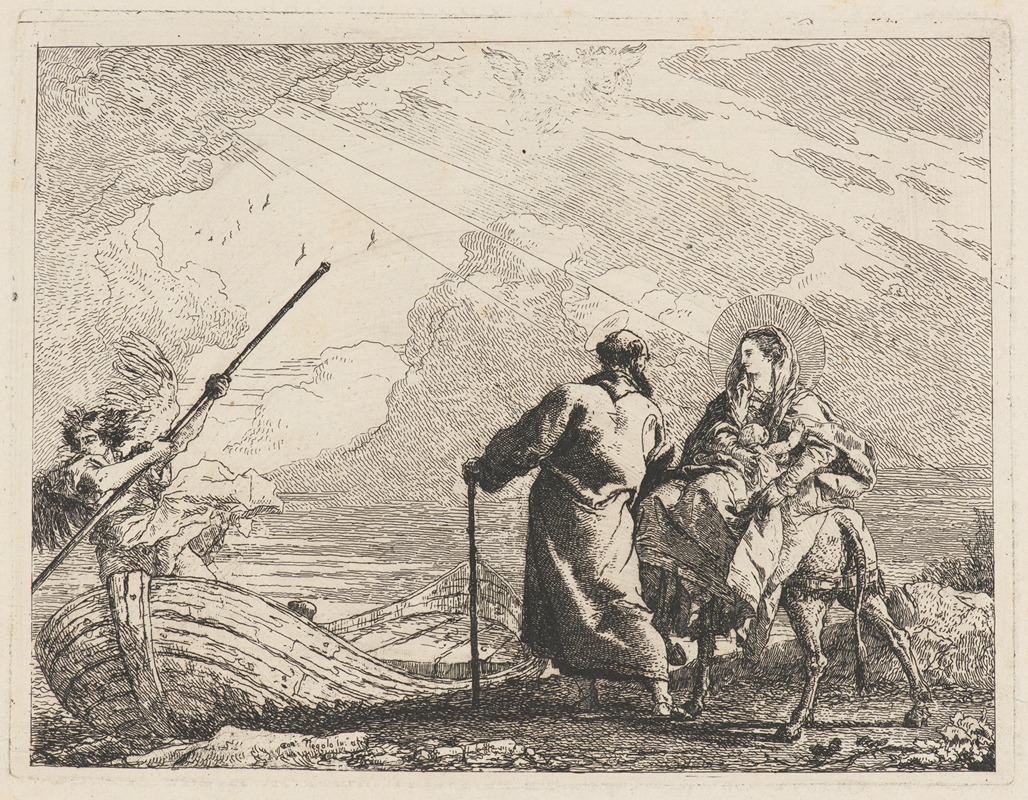
The Holy Family at the Bank of the River
A hand-painted replica of Giovanni Domenico Tiepolo’s masterpiece The Holy Family at the Bank of the River, meticulously crafted by professional artists to capture the true essence of the original. Each piece is created with museum-quality canvas and rare mineral pigments, carefully painted by experienced artists with delicate brushstrokes and rich, layered colors to perfectly recreate the texture of the original artwork. Unlike machine-printed reproductions, this hand-painted version brings the painting to life, infused with the artist’s emotions and skill in every stroke. Whether for personal collection or home decoration, it instantly elevates the artistic atmosphere of any space.
Giovanni Domenico Tiepolo, an Italian painter and printmaker, was a prominent figure in the 18th-century Venetian art scene. He was the son of the renowned artist Giovanni Battista Tiepolo and followed in his father's footsteps, developing a distinctive style that combined elements of the Rococo and Neoclassical movements. One of his notable works is "The Holy Family at the Bank of the River," which exemplifies his skill in composition and narrative.
"The Holy Family at the Bank of the River" is a painting that depicts the biblical figures of the Virgin Mary, Saint Joseph, and the infant Jesus. This artwork is a fine example of Tiepolo's ability to convey religious themes with a sense of intimacy and warmth. The painting captures a serene moment in the life of the Holy Family, set against the backdrop of a tranquil riverbank. The composition is carefully arranged to draw the viewer's eye towards the central figures, highlighting their significance.
Tiepolo's use of color and light in this painting is particularly noteworthy. He employs a soft palette, with gentle blues, greens, and earth tones that create a harmonious and peaceful atmosphere. The light in the painting is skillfully manipulated to enhance the sense of divinity and grace surrounding the Holy Family. This use of light and color is characteristic of Tiepolo's work and reflects the influence of his father's dramatic and dynamic style.
The figures in "The Holy Family at the Bank of the River" are rendered with a delicate attention to detail. The Virgin Mary is depicted with a serene expression, embodying maternal tenderness and devotion. Saint Joseph, often portrayed as a protective figure, is shown in a contemplative pose, adding a sense of depth to the narrative. The infant Jesus is the focal point of the composition, symbolizing purity and innocence. Tiepolo's ability to convey emotion through the expressions and gestures of his subjects is a testament to his artistic skill.
In addition to the central figures, the painting includes elements of the natural landscape, which serve to enhance the overall composition. The riverbank setting provides a sense of tranquility and seclusion, suggesting a moment of respite and reflection for the Holy Family. This integration of landscape and figures is a hallmark of Tiepolo's work, demonstrating his ability to create cohesive and engaging narratives.
"The Holy Family at the Bank of the River" is a reflection of the religious and cultural context of 18th-century Venice. During this period, religious art was an important means of conveying spiritual themes and values. Tiepolo's work is imbued with a sense of reverence and devotion, capturing the essence of the Holy Family's significance in Christian iconography.
Giovanni Domenico Tiepolo's contributions to the art world extend beyond his religious paintings. He was also known for his frescoes and etchings, which further showcased his versatility and creativity. His works are celebrated for their elegance, technical proficiency, and ability to evoke emotion.
In summary, "The Holy Family at the Bank of the River" by Giovanni Domenico Tiepolo is a masterful representation of religious art from the 18th century. Through his use of composition, color, and light, Tiepolo creates a poignant and intimate portrayal of the Holy Family, capturing a moment of peace and reflection. This painting is a testament to Tiepolo's skill as an artist and his ability to convey complex narratives with grace and sensitivity.





